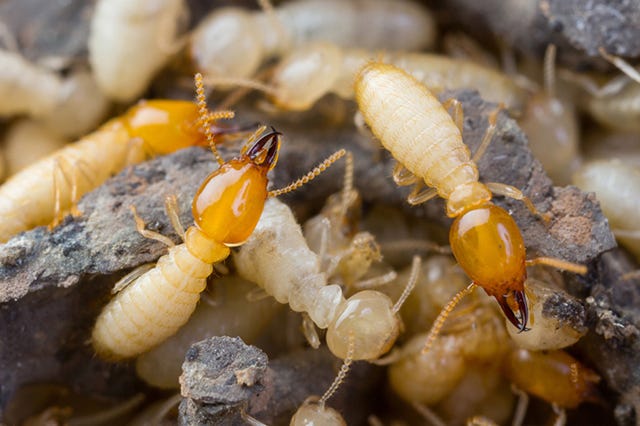4 Simple Techniques For Eco Bed Bug Exterminators Dc
Table of ContentsThe Eco Bed Bug Exterminators Dc Ideas3 Simple Techniques For Eco Bed Bug Exterminators DcEco Bed Bug Exterminators Dc for DummiesThe Ultimate Guide To Eco Bed Bug Exterminators DcGetting My Eco Bed Bug Exterminators Dc To Work
Due to the fact that chemicals are hazardous, they are also potentially hazardous to people, animals, other organisms, and the atmosphere. People who use chemicals or routinely come in contact with them have to recognize the relative toxicity, potential wellness impacts, and preventative steps to reduce direct exposure to the products they use. Hazard, or threat, of making use of chemicals is the capacity for injury, or the level of risk involved in utilizing a pesticide under a provided set of problems.
Nonetheless, applicators can reduce or nearly remove direct exposure-- and hence lower danger-- by complying with the tag directions, using individual protective apparel and devices (PPE), and taking care of the pesticide properly. For instance, greater than 95 percent of all pesticide exposures originate from dermal direct exposure, primarily to the hands and lower arms. By using a pair of unlined, chemical-resistant gloves, this sort of exposure can be almost eliminated.
The hazardous results that happen from a single exposure by any course of entry are labelled "acute impacts." The four routes of direct exposure are dermal (skin), breathing (lungs), oral (mouth), and the eyes. Intense toxicity is established by taking a look at the facial poisoning, breathing poisoning, and oral toxicity of guinea pig.
Eco Bed Bug Exterminators Dc for Dummies
Severe toxicity is gauged as the quantity or focus of a toxicant-- the a.i.-- required to kill half of the animals in a test populace. This step is normally shared as the LD50 (lethal dose 50) or the LC50 (dangerous focus 50). Furthermore, the LD50 and LC50 worths are based on a solitary dosage and are taped in milligrams of pesticide per kilogram of body weight (mg/kg) of the examination pet or partly per million (ppm).
The reduced the LD50 or LC50 value of a pesticide product, the greater its poisoning to humans and pets. Pesticides with a high LD50 are the least harmful to humans if used according to the directions on the item label. The chronic poisoning of a pesticide is identified by subjecting test pets to lasting direct exposure to the active ingredient.
The chronic poisoning of a chemical is harder than intense poisoning to figure out with laboratory evaluation. Products are classified on the basis of their relative acute toxicity (their LD50 or LC50 values). Chemicals that try this site are classified as extremely harmful (Poisoning Group I) on the basis of either dental, facial, or inhalation toxicity have to have the signal words DANGER and poisonous substance published in red with a skull and crossbones sign plainly displayed on the front panel of the package tag.
The severe (solitary dosage) oral LD50 for pesticide products in this team varies from a trace amount to 50 mg/kg. As an example, direct exposure of a couple of drops of a product taken by mouth can be deadly to a 150-pound individual. Some pesticide products have just the signal word DANGER, which tells you absolutely nothing regarding the intense poisoning, simply that the product can trigger extreme eye damage or serious skin inflammation
Eco Bed Bug Exterminators Dc Things To Know Before You Get This
In this category, the intense oral LD50 arrays from 50 to 500 mg/kg. A tsp to an ounce of this product could be fatal to a 150-pound individual (bed bug heat treatment). Chemical items identified as either a little hazardous or fairly nontoxic (Poisoning Groups III and IV) are needed to have the signal word CAUTION on the chemical tag

3 Easy Facts About Eco Bed Bug Exterminators Dc Described
All pesticide toxicity chemicalPoisoning including the LD50, can be found on discovered product's Item Safety Product Security InformationMSDS). Pesticide labels and MSDS can be acquired from merchants or makes. In enhancement, the majority of items additionally have details that can be discovered on the net. The signs and symptoms of pesticide poisoning can range from a moderate skin irritability to coma or also fatality.
Individuals likewise differ in their sensitivity to various degrees of these chemicals. Some people might show no reaction to an exposure that might create extreme illness in others (bed bug heater rentals). As a result of potential health worries, pesticide users and trainers must identify the typical symptoms and signs of chemical poisoning. The results, or signs, of chemical poisoning can be broadly specified as either topical or systemic.
Indicators on Eco Bed Bug Exterminators Dc You Need To Know
Dermatitis, or swelling of the skin, is approved as the most commonly reported topical effect connected with chemical exposure. Some people tend to cough, wheeze, or sneeze when subjected to pesticide sprays.
This sign normally subsides within a couple of minutes after an individual is removed from the exposure to the toxic irritant. A reaction to a pesticide product that creates a person not just to sneeze and cough yet also to develop extreme acute respiratory system symptoms is much more likely to be a real hypersensitivity or sensitive reaction.
Systemic effects are fairly different from topical results. They often happen far from the original point of contact as an outcome of the pesticide being soaked up right into and distributed throughout the body. Systemic results often consist of nausea or vomiting, vomiting, fatigue, headache, and intestinal tract disorders. In advanced poisoning cases, the individual might experience changes in heart rate, problem breathing, convulsions, and coma, which can lead to fatality.